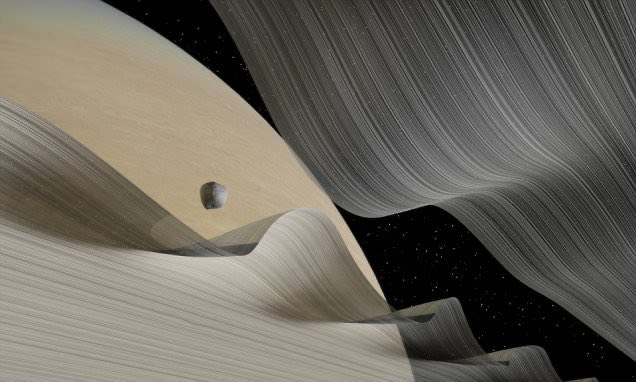NASAのTwitterイラスト検索結果。 5,414 件中 40ページ目
“NASA scientists say the intrusion could warm the Earth’s surface” | @SmithsonianMag
Tonga Volcanic Eruption Blasted an Enormous Plume of Water Vapor Into the Atmosphere
Read More: https://t.co/aGZjkNMynS
#science #environment
A bit of #Jupiter
Credits: NASA/JPL-Caltech/SwRI/MSSS/@kevinmgill
Daphnis Moon in Saturn system : The Wave-Making Ring Shepherd. https://t.co/VoKiPho8lo Img1&2 by Kevin Gill, renditions reveal a close-up look at the effects of the tiny moon on the Keeler Gap, Img3&4 #Astrophotography by @CassiniSaturn SSI, JPL, ESA, NASA #Space #astronomy
A bit of #Jupiter
Credits: NASA/JPL-Caltech/SwRI/MSSS/Gerald Eichstädt/@_TheSeaning
Gorgeous jet in the Carina Nebula in visible light (captured with Hubble's WFC3 detector)
(Credit: NASA, ESA, and the Hubble SM4 ERO Team)
https://t.co/oCjCqg8FuR
探査機が小惑星に体当たり、軌道ずらして地球守れ…NASAが初の実験へ
NASA가 무인탐사선을 소행성에 부딪쳐 궤도를 바꾸는 실험을 세계최초로 도전. 미래에 소행성이 지구로 날아올때 지구를 지킬수 있는 수단이 될지 확인하는 목적이라고.
Il #24settembre 2006 la NASA ha registrato il più grande buco di ozono nell'atmosfera mai accertato. Dal 21 al 30/9 l'area media è stata di 17 mln di km². L'ozono assorbe i dannosi raggi ultravioletti-B presenti nella luce solare che danneggia i tessuti vegetali, animali e umani.
No Shortage of Dreams — "Think Big: A 1970 Flight Schedule for NASA's 1969 Integrated Program Plan"
https://t.co/UZ4OoNdEEL
I believe that NASA boss Tom Paine was a disaster for the agency, though I admire him for his enthusiasm for spaceflight and his belief in NASA's future.
The Horsehead Nebula in Infrared from Hubble
-
📷: NASA, ESA, Hubble; Processing: Alexandra Nachman
#三連休はフォロワーさんが増える
令和4年9月はこのハッシュタグを2回使えるんだね……乗ります!
趣味は広く浅くなのでその時にハマったものを描く者となっておりますです(;´▽`A``
打ち上げ延期になってしまいましたがNASAアルテミス計画が推しでございます……だってスヌーピーを描けるからw
【宇宙】16年前の今日、2006年9月23日、日本の太陽観測衛星「ひので」が打ち上げられました。可視光・極端紫外線・X線のそれぞれで太陽を観測する望遠鏡を搭載し、それぞれ素晴らしい成果を挙げています。Image Credit: NASA/GSFC/C. Meaney
'The Horsehead Nebula in Infrared from Hubble' image from the #NASA_App
https://t.co/R4jUvxDwNW
#Space #NASA
Stellar death can be beautiful. Here are the remnants of a supernova over 160,000 light-years away from Earth ✨💥
(This is a composite image of X-ray and optical data)
Image credits: X-ray: NASA/CXC/GSFC/B. J. Williams et al.; Optical: NASA/ESA/STScI
Endeavour Gets a Piggyback Ride via NASA https://t.co/KOITiYrnyz
















































